Rock Periwinkle
Click [HERE] of you urgently need to identify L. articulata
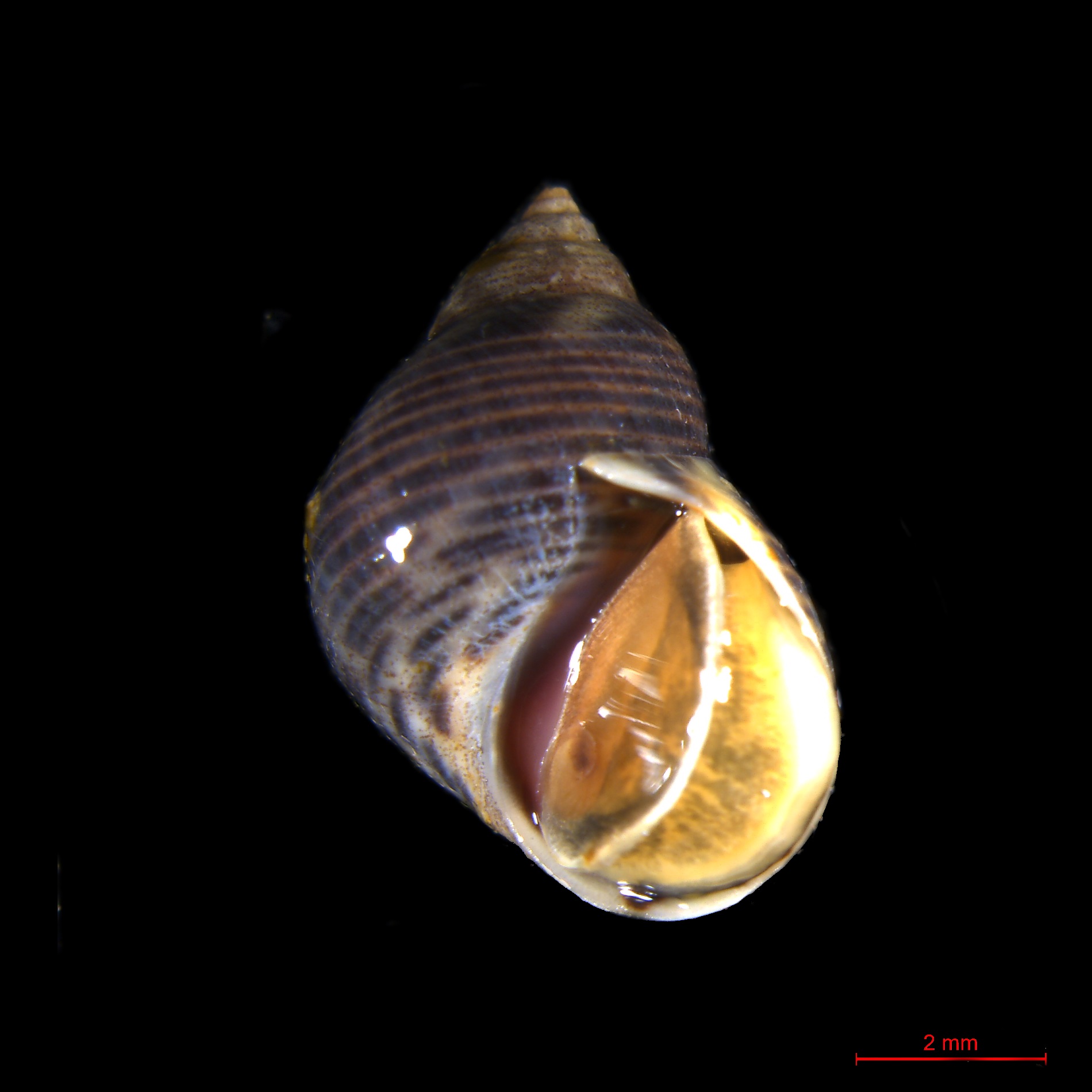 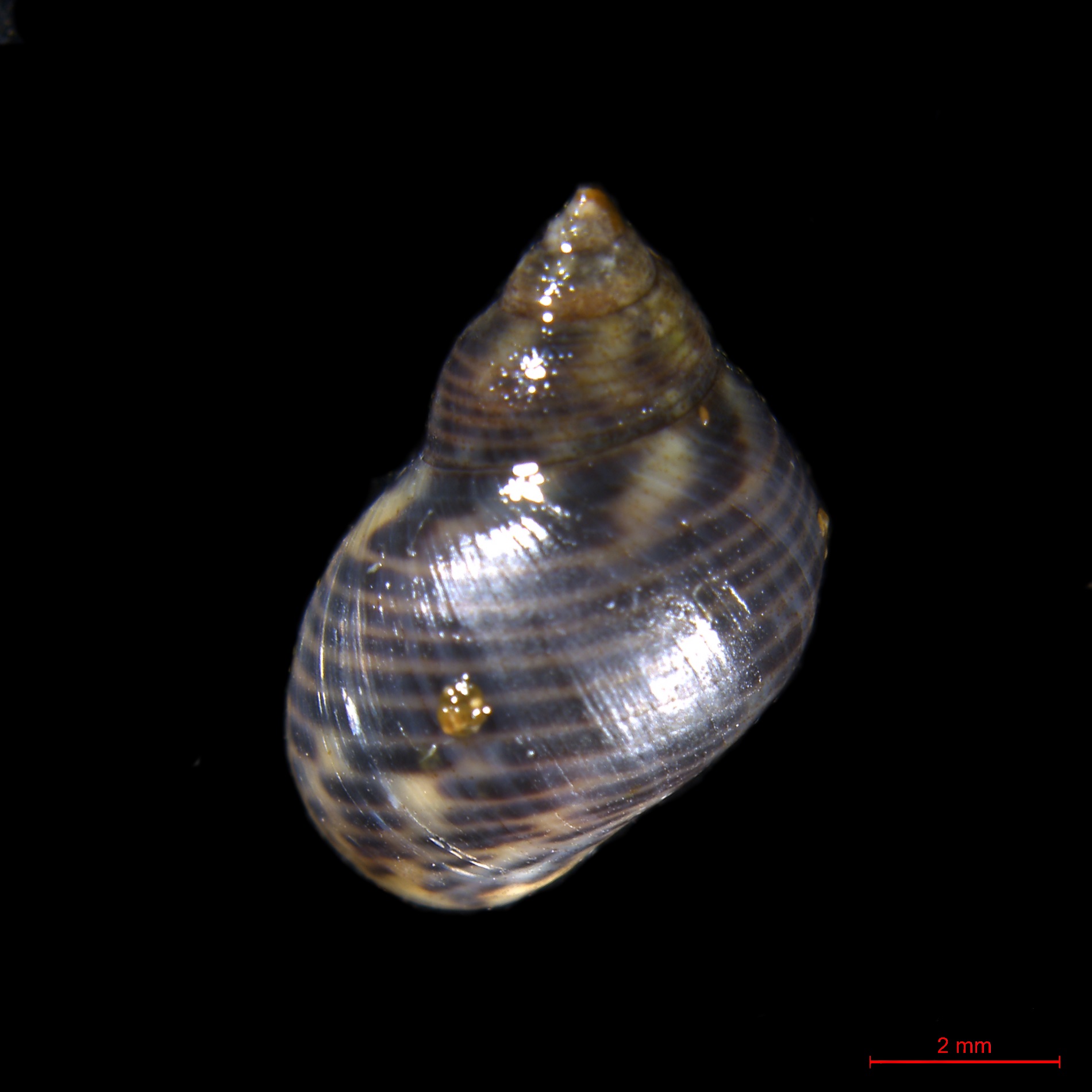 |
| Fig 1. Shell of Littoraria articulata from St John’s Island, Singapore. Image by Tan Yi Gain |
Table of Contents
Introduction
Click [HERE] of you urgently need to identify L. articulata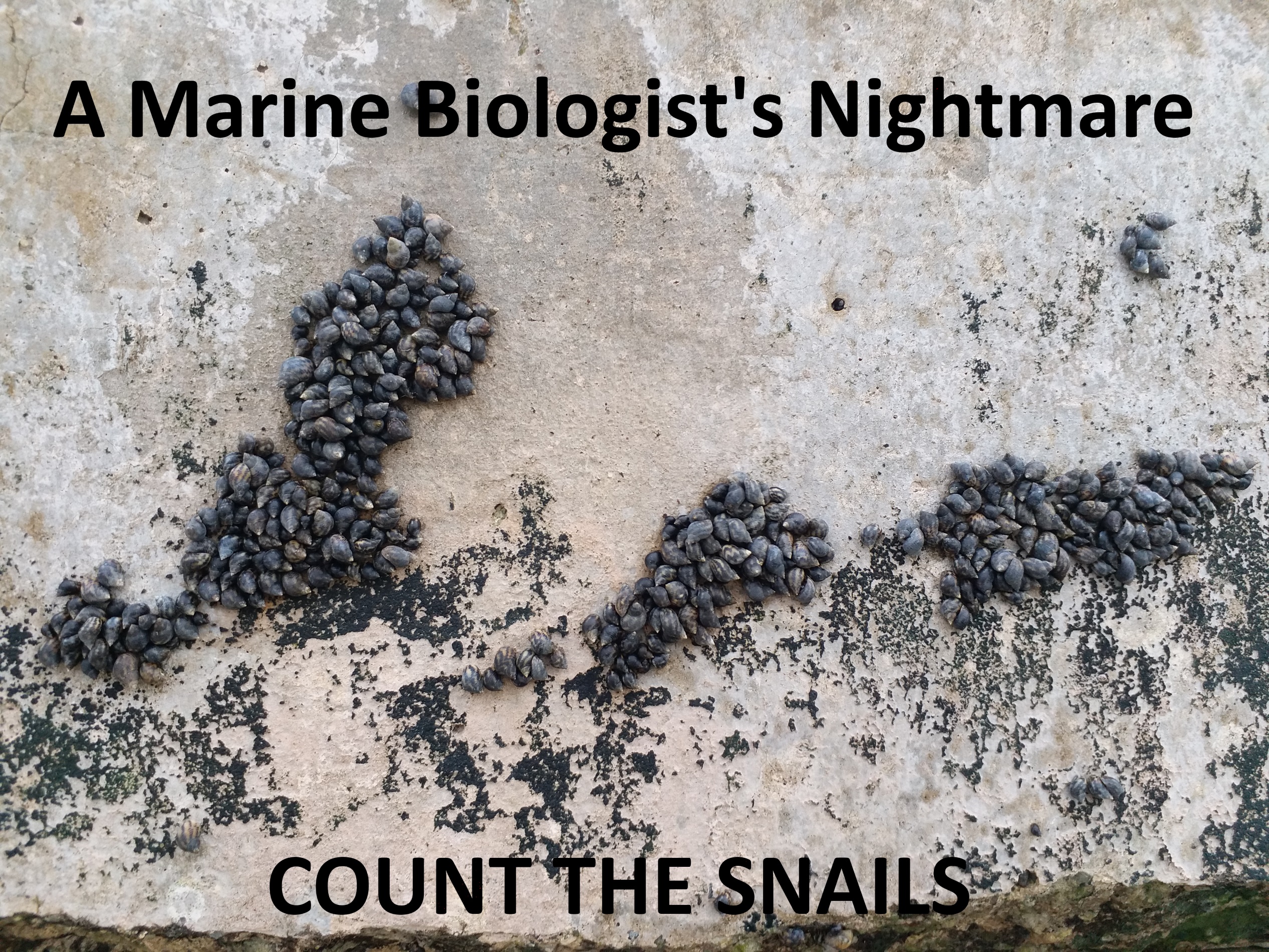 |
| Fig 2. Littoraria in its "natural" habitat. Image by Tan Yi Gain |
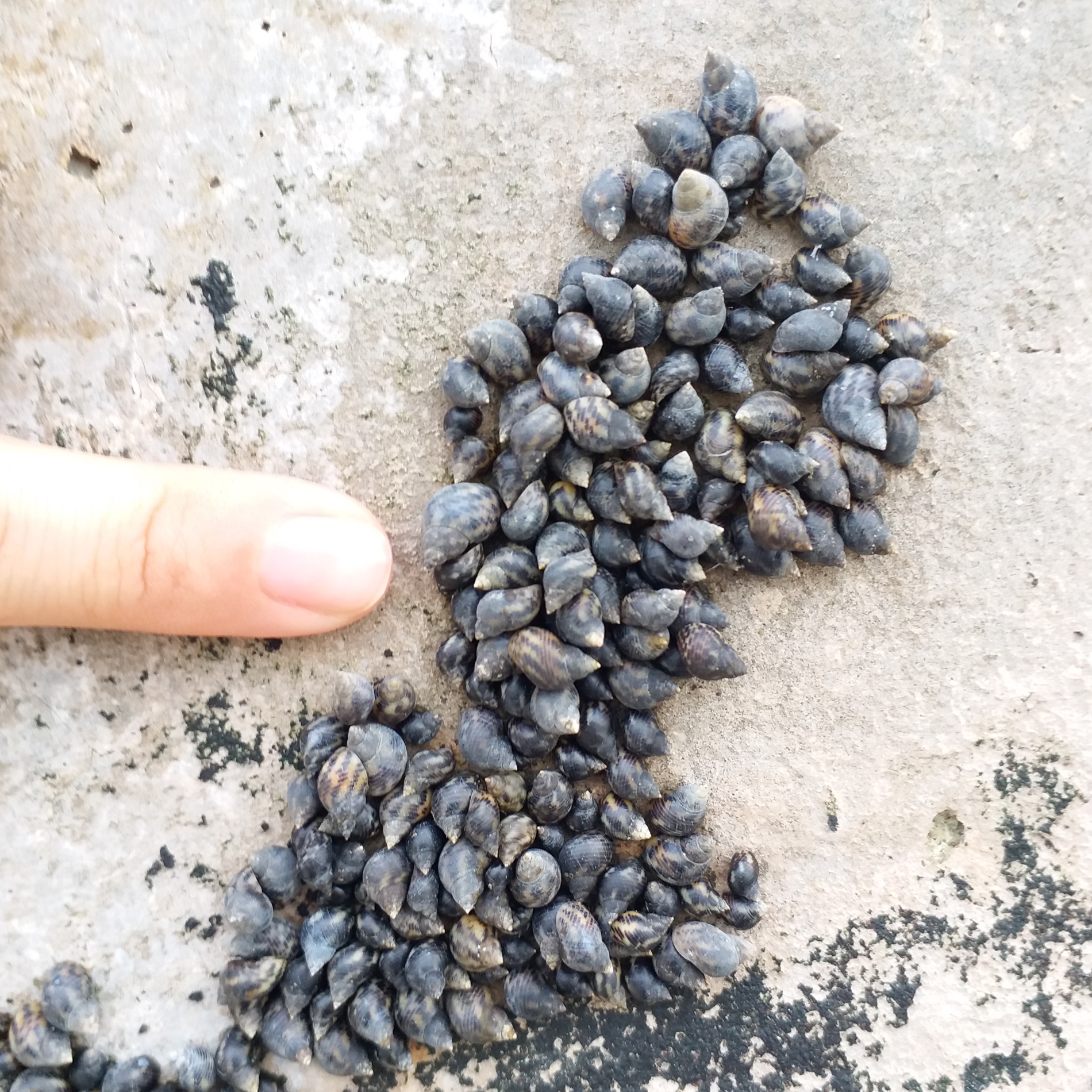 |
| Fig 3. Littoraria are small in size. Note this image contains several Littoraria species including L. articulata and L. strigata. Image by Tan Yi Gain |
One of such species (see Fig 3) even look so similar to the L. articulata that it is impossible to distinguish them in the field [3][4] and Reid suggests further research is required to verify that they are distinct species [1].
This species may look unremarkable when clustered together on rocks due to its small size with a shell height ranging from 6 to 20mm[1] and seemingly dark and plain looking shell when observed from afar. However, a closer inspection is required to appreciate its polymorphic shell patterns and coloration.
Life History and Behaviour
[back to top]Always wondered how snails reproduced? Here are some highlights of the life history of L. articulata.
Promiscuous males
L. articulata is a Gonochoristic (individuals are distinct separate sexes) species and females have the tendency to spawn around August [4].
Male L. articulata are not able to recognize the gender of other L. articulata during the mating process as they are neither able to distinguish nor discriminate between male and female slime trails. This is due to the females not always releasing chemical cues in their trails in dense populations [5] as seen in Fig 2 and Fig 3.
Egg capsules and larvae
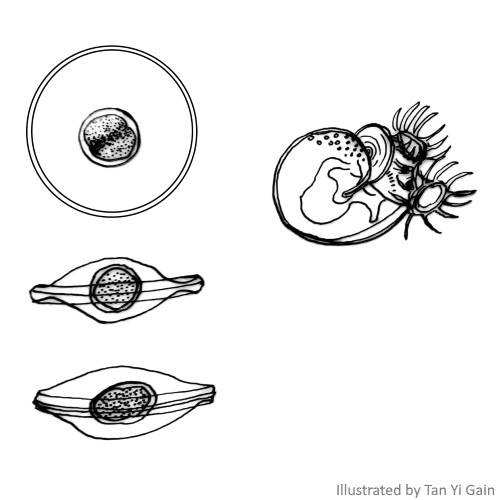 |
| Fig 4. Egg capsule and larvae of L. articulata. Illustrated by Tan Yi Gain. Egg capsule top view (left top), side view (left bottom) and freshly hatched larvae (right). |
Each capsule protects a single egg [1].
Not much have been studied about the life cycle of L. articulata as well as larval development. Freshly laid eggs were observed to hatch within the week (Personal Observation) into planktonic larvae (Fig 4).
Eat to move, move to eat
Littoraria are herbivores that feed on algae by extending their mouth to the surface and scrapping food up with their radula (toothed tongue) which can be clearly seen in the video below.
| Video 1. Littoraria Snail Feeding Behaviour. The mouth is observed to extend towards the glass and the radula can be seen scrapping the glass surface. Video by Tan Yi Gain |
Periwinkle snails (Littorinids) in general are predated by shore birds and crabs [7].
Behaviors to prevent predation include moving (transplanting) to different heights with tide changes. [7]. After transplanting to a different elevation, the snails hide in their shells which lowers their chances of being crushed by large crabs and birds or have parts of their shell broken or peeled away from smaller predators like small crabs [7].
Morphology
[back to top]Description of morphology and diagnostic characteristics are mainly adapted from [1] based on the neotype. Anatomy and functions are based on [8]. All photographs and illustrations are based on Littoraria collected from St. John's Island, Singapore.
Shell Morphology
Shell Features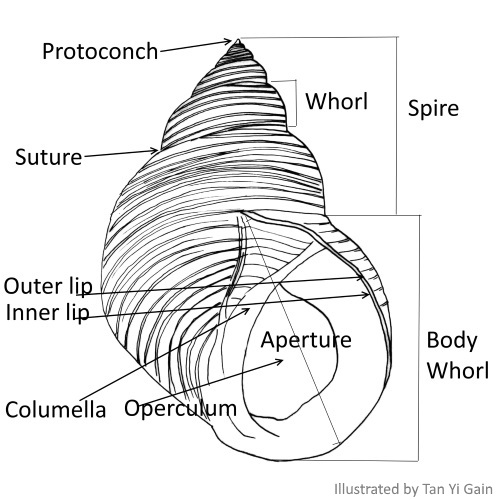 |
| Fig 5. Anatomy of L. articulata Shell. Illustrated by Tan Yi Gain |
| Features |
Description |
| Protoconch |
Larval shell at the apex or point of the tubular shell |
| Columella |
Central axis of which new gastropod shell coils around in a conical fashion during growth. |
| Whorls |
Each complete revolution or coil of the cone around the columella |
| Body Whorl |
The largest and outer most whorl at the base of the cone housing most of the animal’s visceral mass and head-foot. |
| Spire |
Region formed by the remaining spire whorls that rises above the body whorl |
| Suture |
Line of contact between 2 whorls that is tightly cemented |
| Aperture |
Opening of the shell |
| Outer Lip |
Outer edge of the aperture |
| Inner Lip |
Edge lying against the rest of the shell in the aperture |
| Operculum |
Not part of the shell. Door-like disc that closes the aperture when the retracts into the shell |
| Video 2. Littoraria Snail Operculum Opening. Video by Tan Yi Gain |
Shell Description
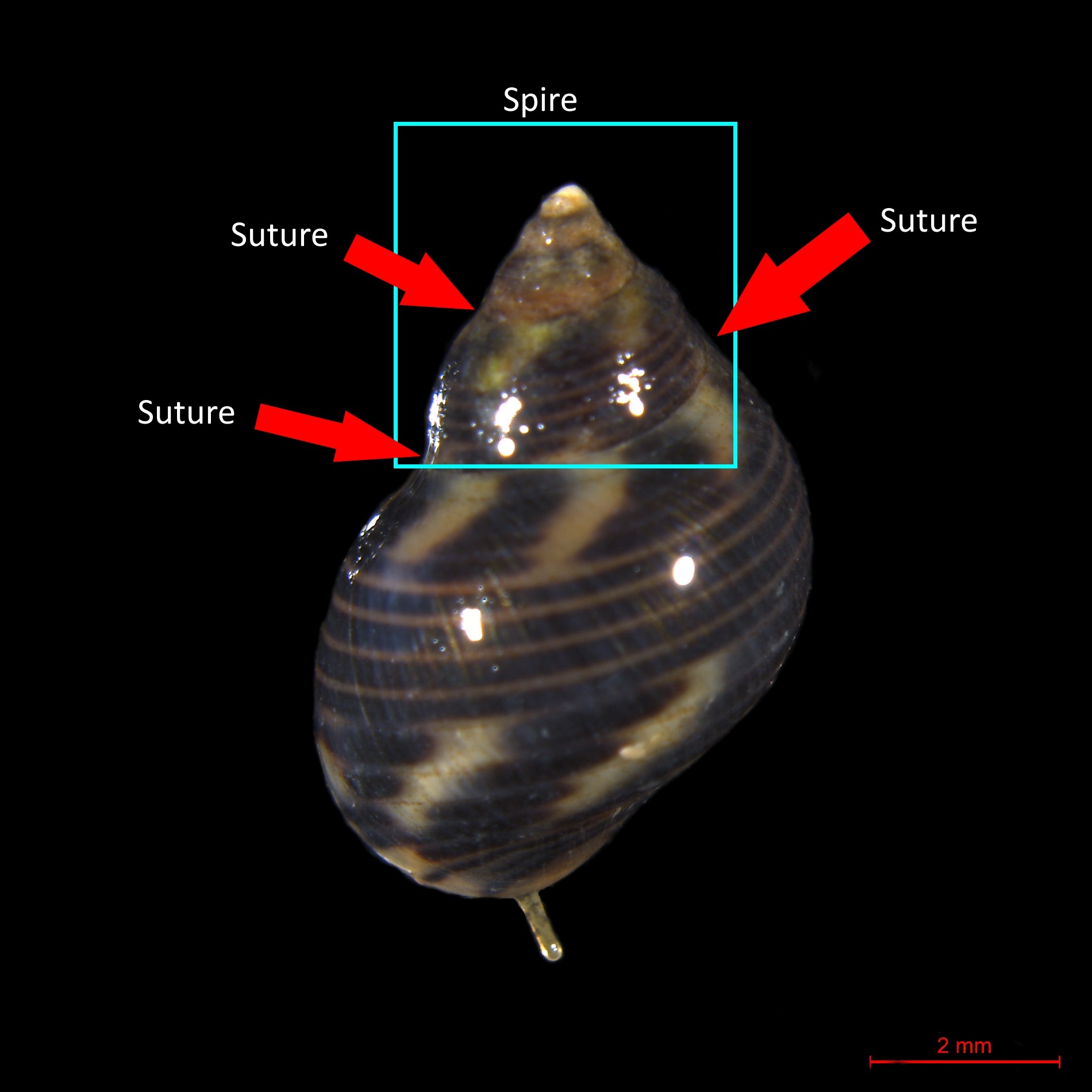 Fig 6. Anti-apetural view of L. articulata showing spire (blue box) and sutures (red arrows) Image by Tan Yi Gain |
Architecture
|
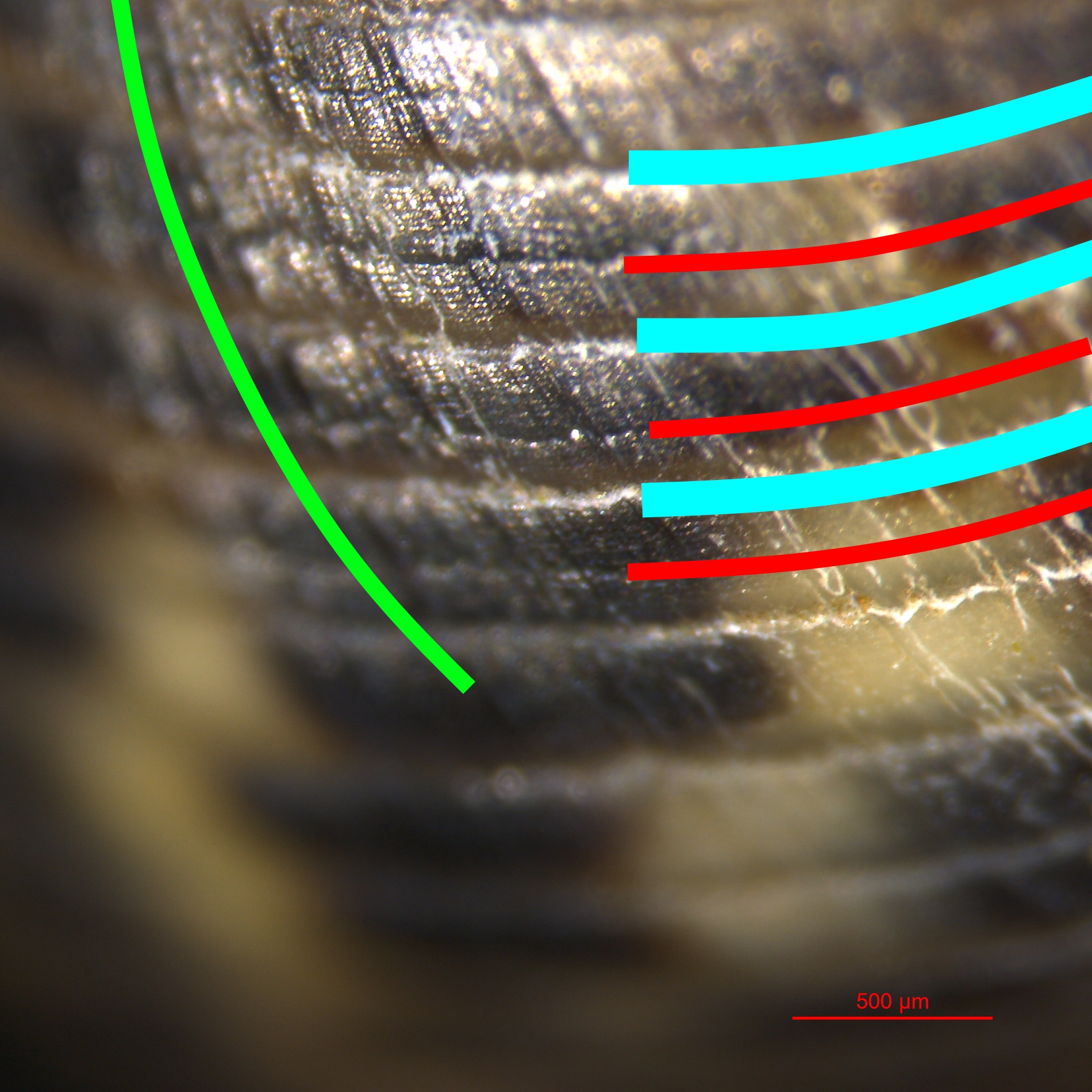 Fig 7. Primary (blue) and secondary (red) grooves of L. articulata. Growth line (green) also shown. Image by Tan Yi Gain |
Sculpture
|
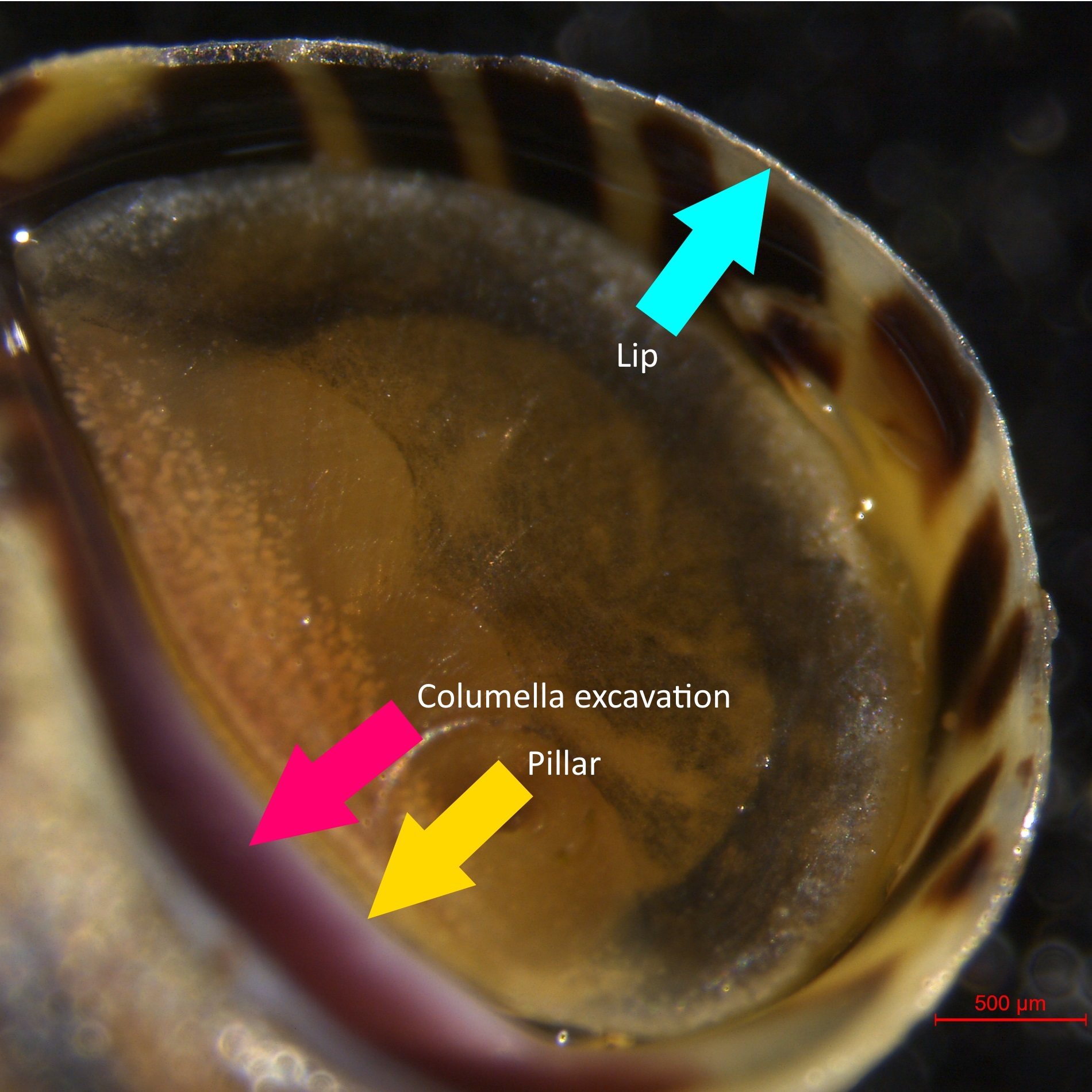 Fig 8. Aperture of L. articulata showing pillar (yellow arrow), columella excavation (red arrow) and lip (blue arrow). Image by Tan Yi Gain |
Aperture
|
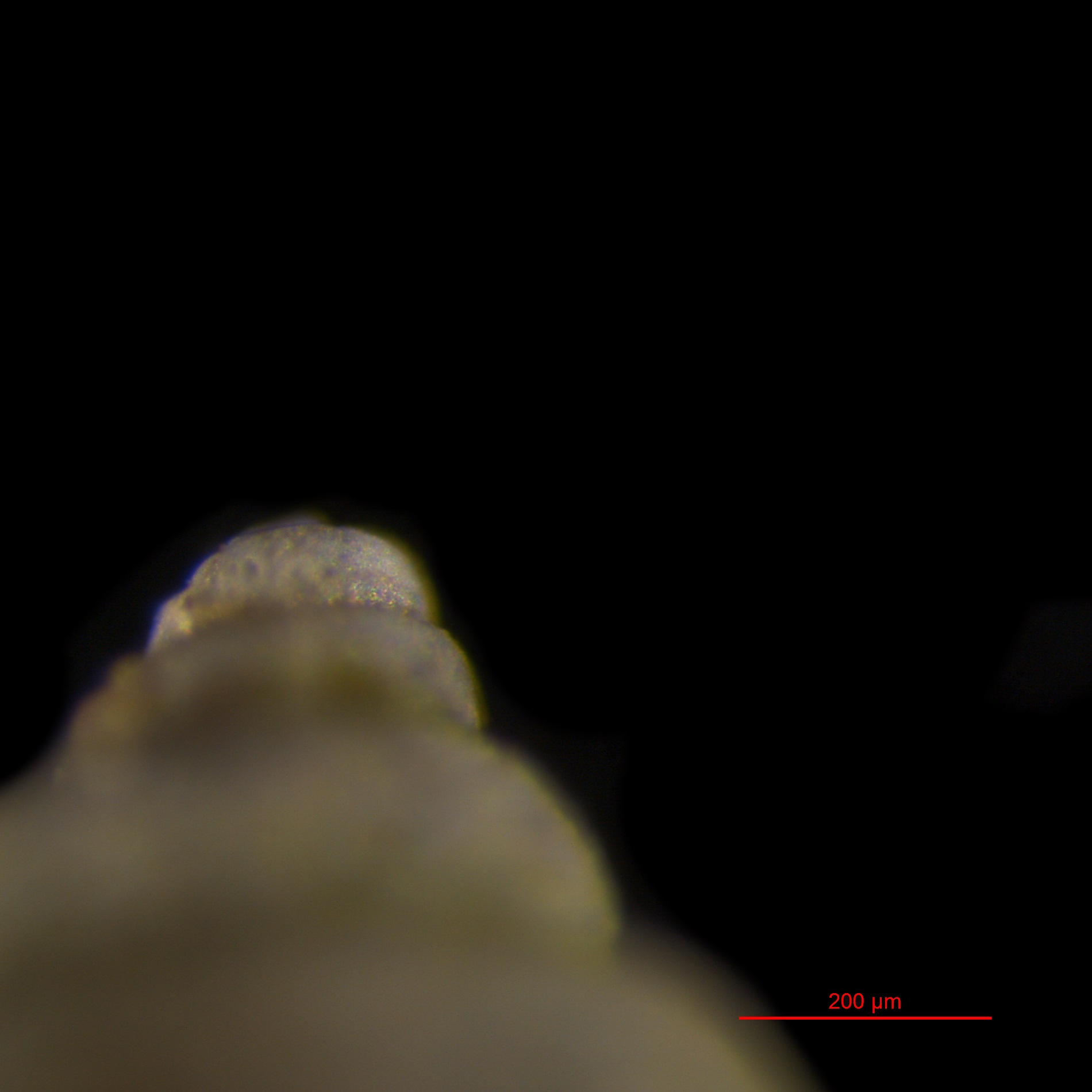 Fig 9. Protoconch of adult L. articulata. Image by Tan Yi Gain |
Protoconch
|
Colour
All Littoraria species have variable shell colour that can be split into two rough categories; base colour and pigmented pattern [1]. Although the range of variation is large, the variations are not discrete (they are continuous on a spectrum) and thus are not strictly considered to be polymorphic [9]. The following tables show the variation in colour on different parts of the L. articulata shell. Note that only the base colour is considered polymorphic [1].
| Base Colour |
Cream Yellow |
Grey |
White |
Orange-Pink (rare) |
| Dark pigmented pattern colour |
Black |
Dark Brown |
| Columella excavation |
Purple |
Dark Purple |
Pink Tinge |
White |
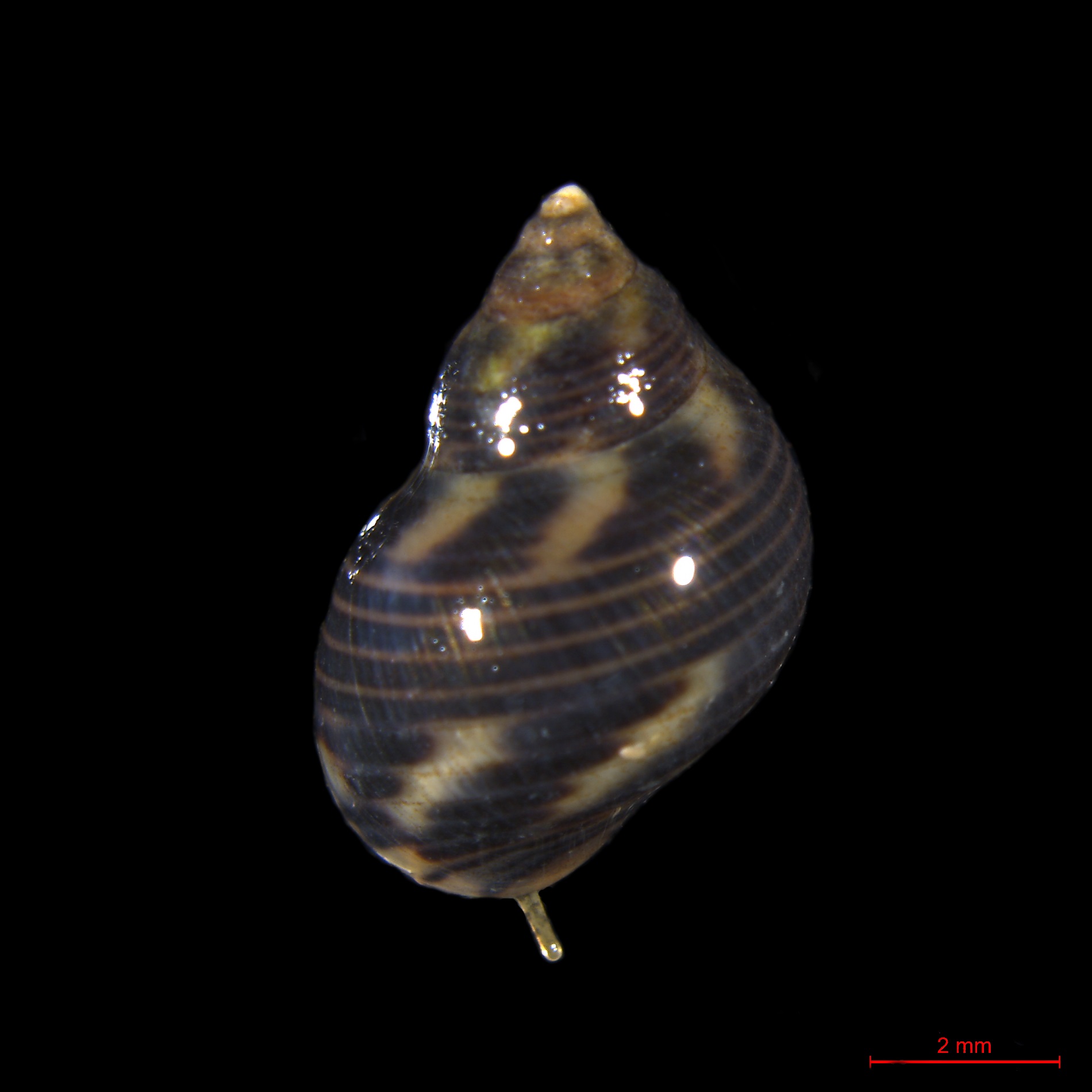 Fig 10a |
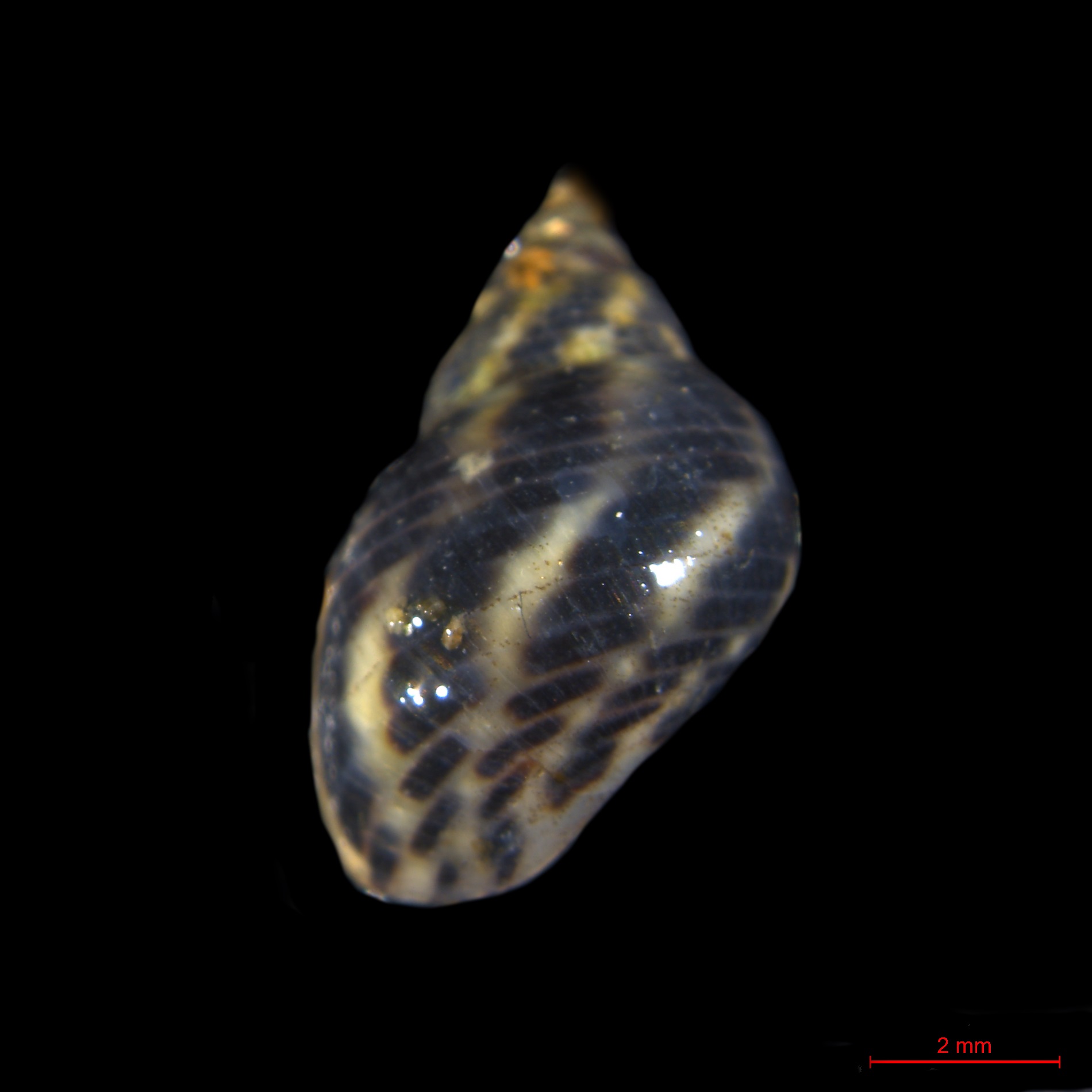 Fig 10b |
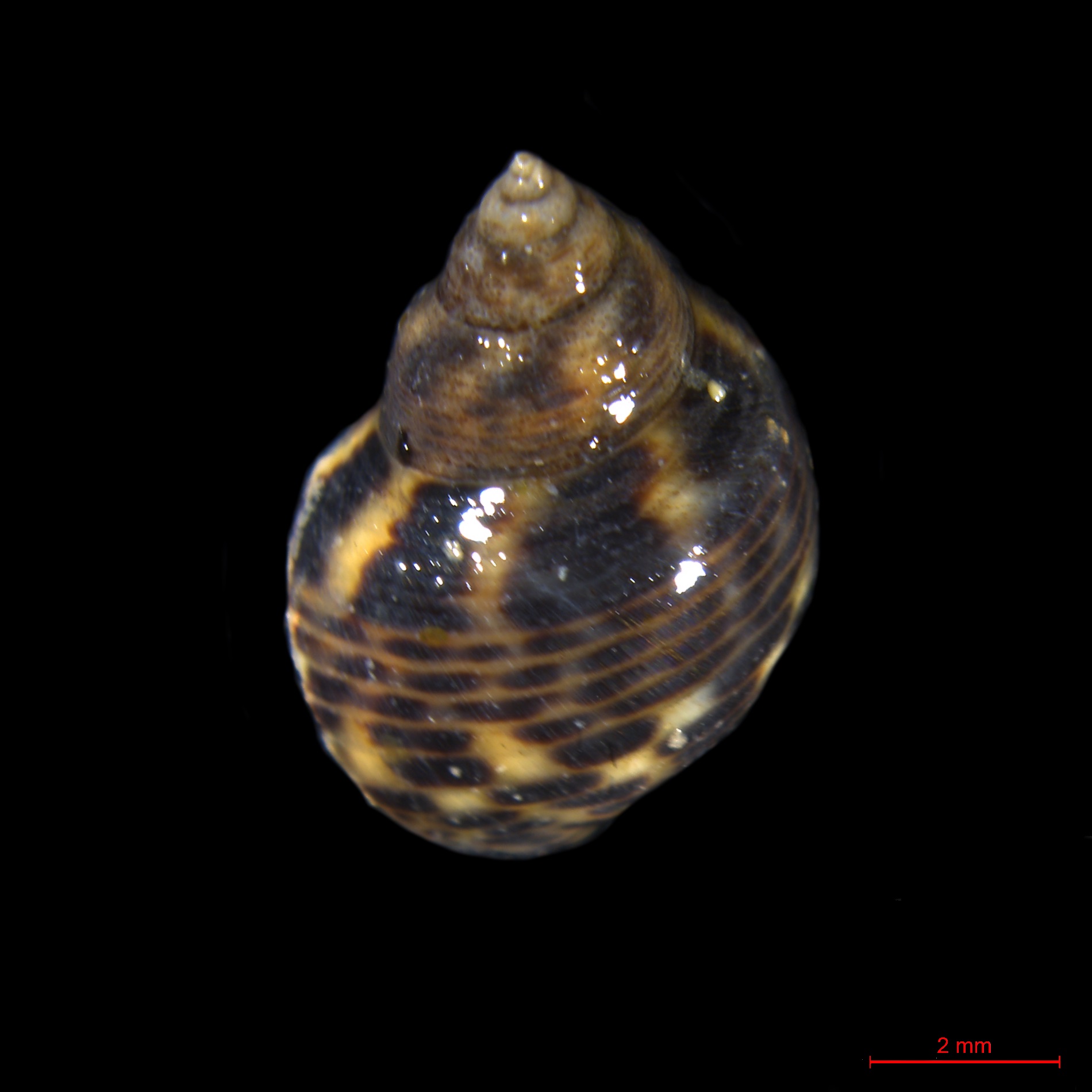 Fig 10c |
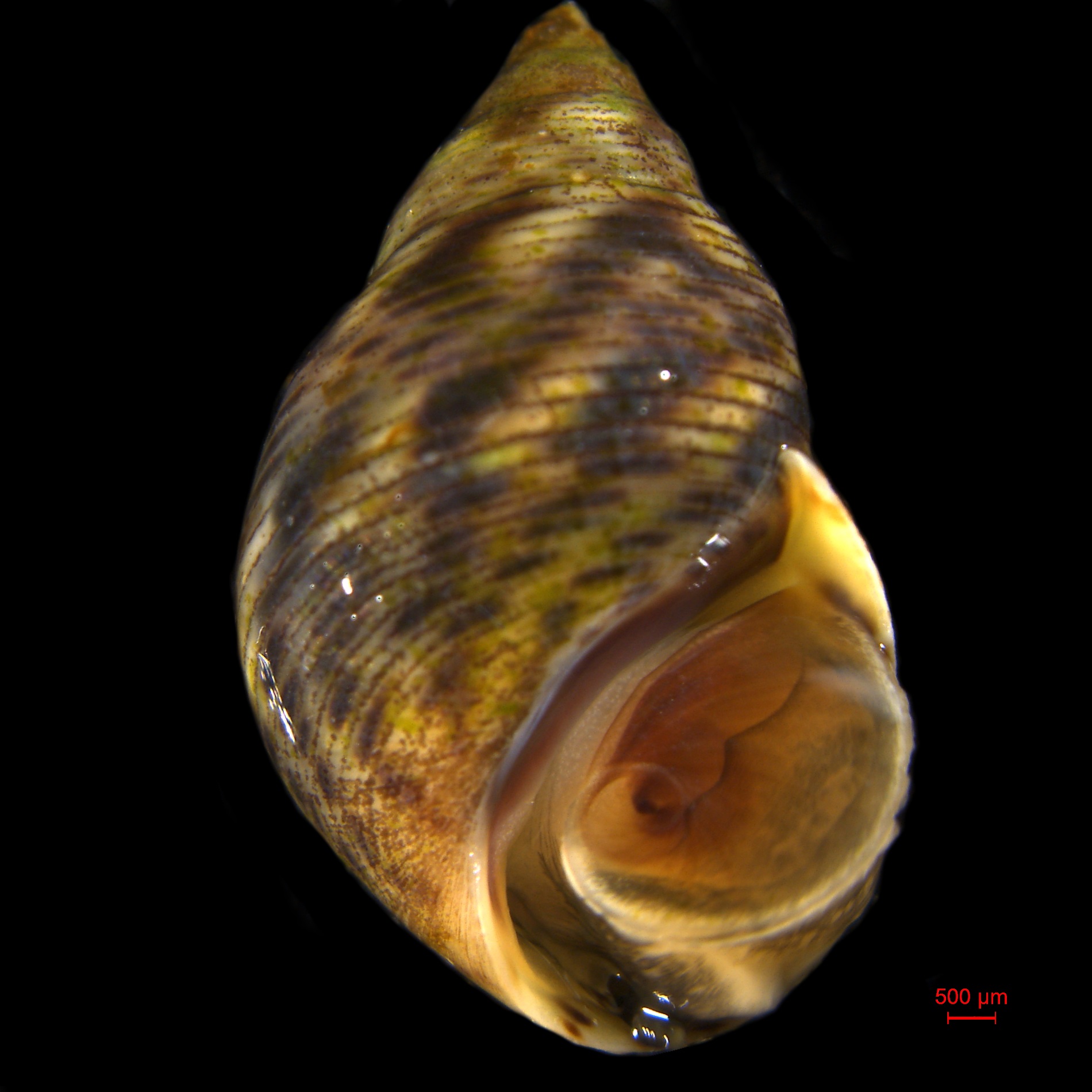 Fig 10d |
In general, shell pattern and colour are so variable within species of the Littoraria genus that it is usually a poor guide in identification. Especially so when used to tell the difference between L. articulata and L. strigata.
The Animal Within
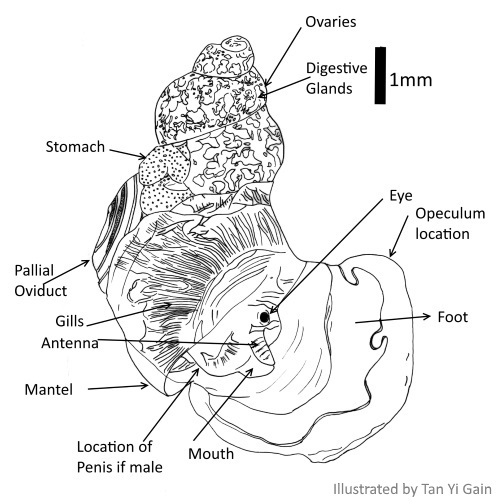 |
| Fig 11. Illustration of internal anatomy, using a dissected female L.strigata as a model. Illustrated by Tan Yi Gain |
Penis
According to Reid [1], the penis is considered the single most important taxonomic character of Littorinid anatomy. There is a lot of variation between Littoraria of the same genus [10]
Pallial oviduct
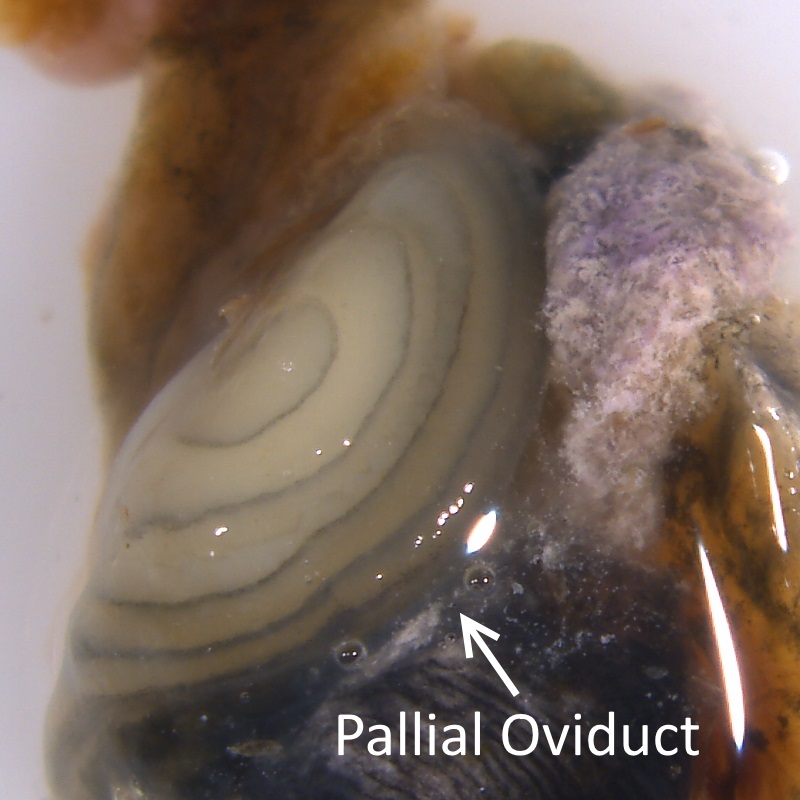 |
| Fig 12. Pallial Oviduct of L. articulata Image by Tan Yi Gain |
Diagnosis
Note: As pretty as these shells are, please do not over-collect them as they are important to their habitats.How to identify L. articulata from similar looking Littoraria from the same habitats? Based on [1]
| Trait |
L. articulata |
L. strigata |
L. vespacea |
L. intermedia |
| Shell shape and size |
|
|
|
|
| Sculpture |
|
|
|
|
| Pattern and Colour |
|
|
|
|
| Columella excavation and pillar |
|
|
|
|
| Penis |
|
|
|
|
| Pallial oviduct |
|
|
|
|
Locality
[back to top]Global distribution
L. articulata have a wide distribution ranging from South-East Asia, Northern Australia, Japan, South Eastern Africa as well as tropical parts of South America
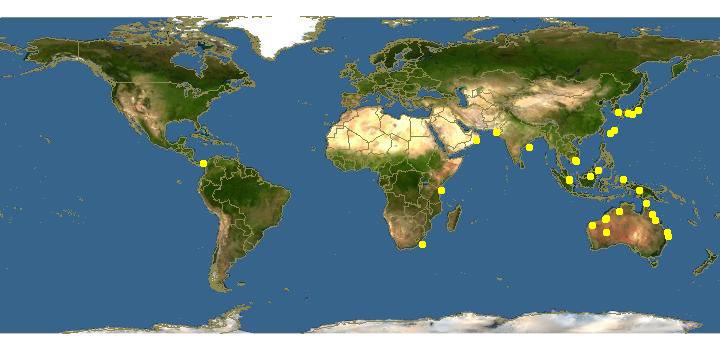 |
| Fig 13. Distribution map of Littoraria articulata based on occurrence records available through the Discover Life network, and may not represent the entire distribution. Image from EOL used according to website policy. (Accessed 20 Nov 2017) |
Local distribution
L. articulata can be found along the Southern and Eastern coasts of Singapore as well as on the Southern Islands.
| Fig 14. Screen shot of Flickr Distribution map of Littoraria articulata in Singapore. Available here |
Habitats
L. articulata are most abundant about 0.3 to 1.2m and sometimes up to 2m when there are big tidal ranges [1][11]. They are frequently found on Avicennia mangrove trees and lower level roots of Rhizophora mangrove trees. They are also abundant on rocks above water level [1][11].
Practical Information
[back to top]Economic Significance
Although edible, these tiny snails are not usually collected for human consumption due to its small size
The shells of L. articulata are sold and traded online among shell collectors however the collection of these shells are not recommended as it deprives them of their ecological roles.
| Fig 15. Screen shot of online sale of L. articulata, here. Image by Tan Yi Gain |
Rock Periwinkle (Littorinids) in general are important to the control of algal communities along coastal areas [12] simply be grazing.
Conservation
L. articulata have not been evaluated by IUCN and is not listed in the Singapore Red Data Book of threatened flora and fauna in Singapore.
However populations can be threatened by irresponsible collection for shells.
Taxonomy and Systematics
[back to top]Etymology
'articulata' comes from the Latin root word of ‘articulatim’, which means distinct of composing of segments united by something.
Type
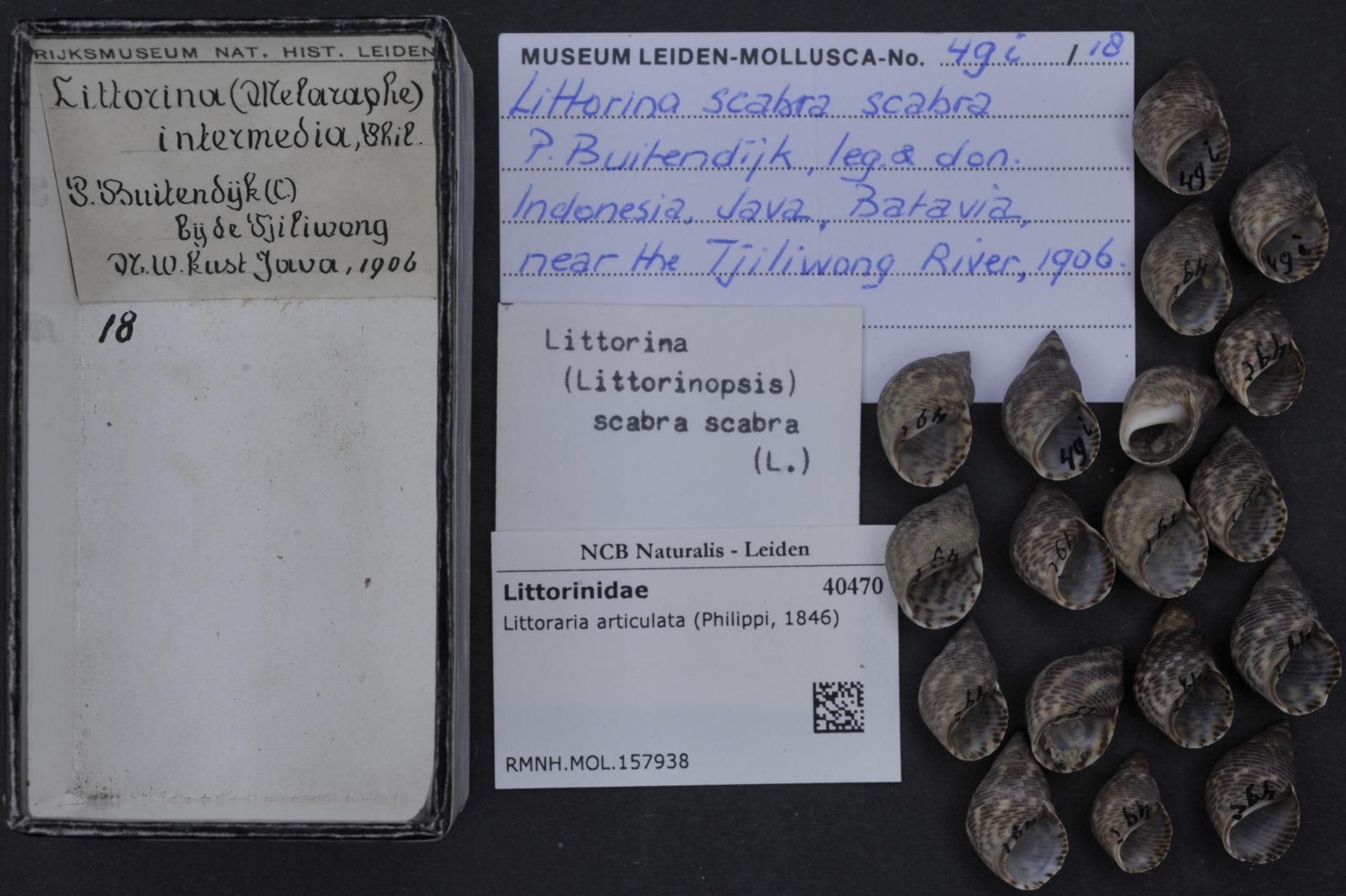 |
| Fig 16. RMNH.MOL.157938 - Littoraria articulata (Philippi, 1846) Photograph of box used to house the missing holotype (Left) of L.articulata available from Naturalis Biodiversity Center under Creative Commons CC0 1.0 |
Interestingly they kept the index card and the empty box as shown in Fig X.
Using the original descriptions and figures published by Philippi, a neotype collected at Lookout Hill, 200km South of Swan Point. The neotype is stored in the British Museum of Natural History under the code BMNH 198348.
Original description
Philippi originally described Littoraria intermedia var articulata based on the specimen of the Cuming collection in the British Museum of Natural History.
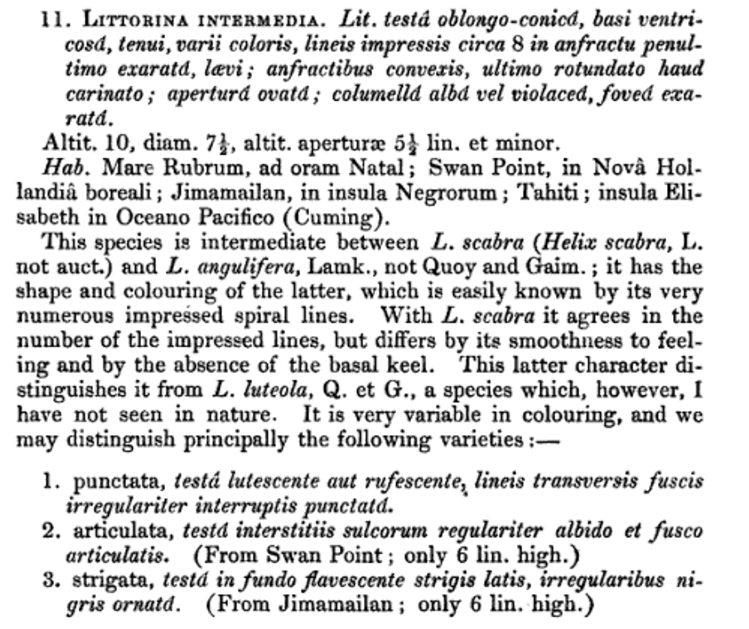 |
| Fig 17. Original description of Littoraria intermedia var articulata by Philippi in 1846 [13] |
Littorina intermedia:
oblong shell-conical base ventricose, thin, multicolored lines printed on the penultimate point, about 8, smooth; with the bends convex, rounded at the last, not with a carina; Aperture ovate; Columella white or purple.
Var. puctata - shell lutescente, or reddish, dark brown with irregular, interrupted punctuated by cross lines
Var. articuata - shell with intervals of regular white and brown furrows articulated
Var. strigata - yellow at the bottom of broad irregular black decoration
Systematics
| Kingdom |
Animalia |
| Phylum |
Mollusca |
| Class |
Gastropoda |
| Subclass |
Caenogastropoa |
| Order |
Littorinimorpha |
| Superfamily |
Littorinoidea(Children, 1834) |
| Family |
Littorinidae(Children, 1834) |
| Subfamily |
Littorininae (Children, 1834) |
| Genus |
Littoraria (Gray, 1833) |
| Subgenus |
Palustorina |
| Species |
articulata (Philippi, 1846) |
Phylogeny
The most recent phylogeny study that covers L. articulata involves 147 species from the subfamily Littorininae [14]. The following figure is part of the BEAST (Bayesian Evolutionary Analysis Sampling Tree) chronogram estimates the ages of the different genus in subfamily Littorininae that shows only genus Littoraria.
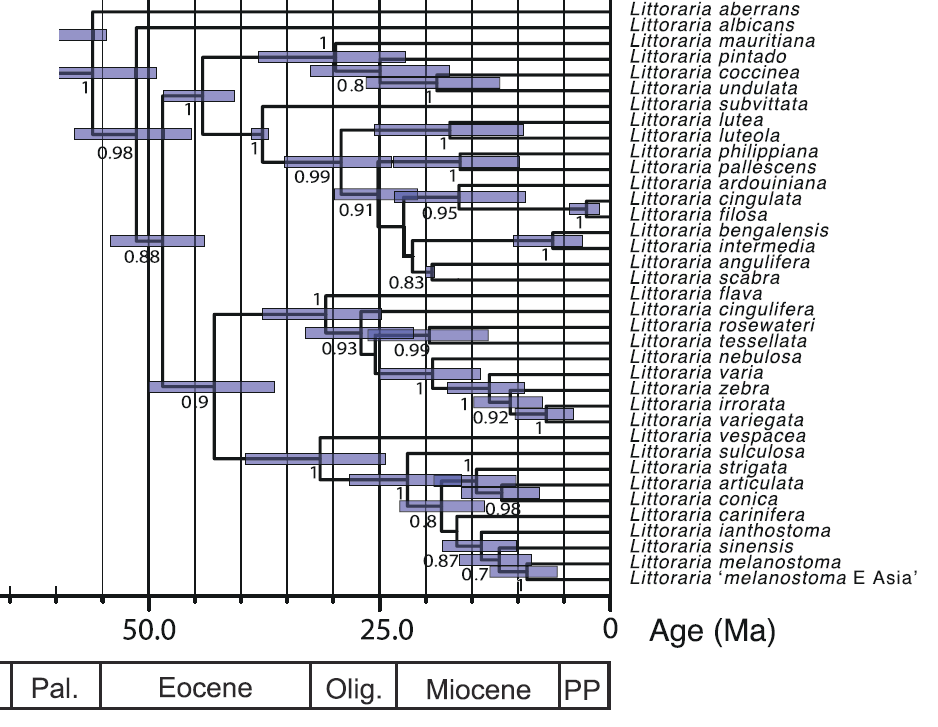 |
| Fig 18. BEAST chronogram of Littoraria based on combined analysis of 28S rRNA, 12S rRNA and cytochrome oxidase c subunit I (COI) From [14] under Fair Use |
Surprisingly, as of Fig 18. despite the fact that L. articulata and L. strigata are morphologically almost indistinguishable, L. articulata is actually more closely related to L. conica than L. strigata.
Taxonomic Status
Is L. articulata an independent species from L. strigata? Reid considers them different species [1] whereas others [4] simply agree just because of Reid [1].
Using the Phylogenetic Species Concept sensu Wheeler and Platnick which uses the Population Aggregation analysis of comparing attributes, the population of L. articulata and L. strigata in South East Asia, which have some overlapping morphological traits [1] would probably be not considered independent species. This would be made worse if the analysis is based solely on shell morphology based on dry specimens kept in museums as the overlapping of shell sculpture, size, coloration and shape between L. articulata and L. strigata is common among South East Asian specimens[1]. However distinct shell morphology attributes occur between populations (such as comparing between the two in Australia) and under this Phylogenetic Species Concept sensu Wheeler and Platnick, they would be distinct species.
Due to the high variability of shell morphology in terms of colours and sculpture, the L. articulata and L. strigata in Singapore and South East Asia may be variants of one population of one single species.
Synonymy
Littorina intermedia var. articulata (Philippi, 1846)
Littorina (Melaraphe) scabra var intermedia (Tryon 1887)
Littorina (Melaraphe) intermedia (Casto de Elera, 1896)
Littorina (Littorinopsis) intermedia (von Martens, 1897)
Melarhaphe intermedia (Yen, 1942)
Melaraphe blanfordi (Dunker, 1871)
Melaraphe scabra (Hedly, 1916)
References and More!
Literature[1] Reid, D.G. (1986) The littorinid molluscs of mangrove forests in the Indo-Pacific region: The genus Littoraria. British Museum of Natural History ISBN 0-565-00978-5
[2] Tan, R. (2016) Rock periwinkle snail. Accessed November 13, 2017. Retrieved from: http://www.wildsingapore.com/wildfacts/mollusca/gastropoda/littorinidae/rock.htm
[3] Tan KS & Chou LM (2000) A Guide to Common Seashells of Singapore. Published by Singapore Science Centre ISBN981-04-3073-6
[4] Sanpanich K, Wells FE, Chitramvong Y. (2008) Reproduction and Growth of Littoraria (Gastropoda: Littorinidae) At Ang Sila, Thailand. The Raffles Bulletin of Zoology 2008 Supplement No 18:225-233
[5] Johannesson K, Saltin SH, Duranovic I, Havenhand JN, Jonsson PR (2010) Indiscriminate Males: Mating Behaviour of a Marine Snail Compromised by a Sexual Conflict? PLoS ONE 5(8): e12005.
[6] Mak YM (1995) Egg Capsule morphology of five Hong Kong rocky shore littorinids. Hydrobiologia 309:53-59
[7] Rochette R & Dill LM (2000) Mortality, behaviour and the effects of predators on the intertidal distribution of littorinid gastropods. Journal of Experimental Marine Biology and Ecology 253 (2000) 165-191
[8] Fretter V. & Graham A (1994) British Prosobranch Molluscs. Their Functional Anatomy and Ecology ISBN 0903874237
[9] Ford E.B. (1945) Polymorphism. Biological Reviews of the Cambridge Philosophical Society 20:73-88
[10] Rosewater J (1970) The Family Littorinidae in the Indo Pacific. Part I. The subfamily Littorininae. Indo-Pacific Mollusca 2:417-506
[11] Reid, D.G. (1985) Habitat and zonation patterns of Littoraria species (Gastropoda: Littorinidae) in Indo-Pacific mangrove forests. Biological Journal of the Linnean Society (1985), 26: 39-68
[12] Miller LP & Denny MW (2011) Importance of behaviour and morphological traits for controlling body temperature in littorinid snails. Biology Bulletin 220(3):209-23
[13] Philippi, R.A. 1846. Descriptions of a new species of Trochus, and of eighteen new species of Littorina, in the collection of H. Cuming, Esq. Proceedings of the Zoological Society of London 1845:138-143
[14] Reid D.G., Dyal P., Williams S.T. (2012) A global molecular phylogeny of 147 periwinkle species (Gastropoda, Littorininae). Zoologica Scripta, 41, 125-136
Images
Fig 1. Shell of Littoraria articulata from St John’s Island, Singapore. Image by Tan Yi Gain.
Fig 2. L. articulata in its "natural" habitat. Image by Tan Yi Gain
Fig 3. Littoraria are small in size. Note this image contains several Littoraria species including L. articulata and L. strigata. Image by Tan Yi Gain
Fig 4. Egg capsule and larvae of L. articulata. Illustrated by Tan Yi Gain
Fig 5. Anatomy of L. articulata Shell. Illustrated by Tan Yi Gain
Fig 6. Anti-apetural view of L. articulata showing spire (blue box) and sutures (red arrows) Image by Tan Yi Gain
Fig 7. Primary (blue) and secondary (red) grooves of L. articulata. Growth line (green) also shown. Image by Tan Yi Gain
Fig 8. Aperture of L. articulata showing pillar (yellow arrow), columella excavation (red arrow) and lip (blue arrow). Image by Tan Yi Gain
Fig 9. Protoconch of adult L. articulata. Image by Tan Yi Gain
Fig 10. Variation in shell patterns of L. articulata. Images by Tan Yi Gain
Fig 11. Illustration of internal anatomy, using a dissected female L.strigata as a model. Illustrated by Tan Yi Gain
Fig 12. Pallial Oviduct of L. articulata Image by Tan Yi Gain
Fig 13. Distribution map of Littoraria articulata based on occurrence records available through the Discover Life network, and may not represent the entire distribution. Image from EOL used according to website policy. (Accessed 20 Nov 2017)
Fig 14. Screen shot of Flickr Distribution map of Littoraria articulata in Singapore. Available here
Fig 15. Screen shot of online sale of L. articulata, here. Image by Tan Yi Gain
Fig 16. RMNH.MOL.157938 - Littoraria articulata (Philippi, 1846)
Photograph of box used to house the missing holotype (Left) of L.articulata available from Naturalis Biodiversity Center under Creative Commons CC0 1.0
Fig 17. Original description of Littoraria intermedia var articulata by Philippi in 1846 [13]
Fig 18. BEAST chronogram of Littoraria based on combined analysis of 28S rRNA, 12S rRNA and cytochrome oxidase c subunit I (COI) From [14] under Fair Use
Videos
Video 1. Littoraria Snail Feeding Behaviour
Video 2. Littoraria Snail Operculum Opening
Acknowledgment
This species page would not have been possible without Dr Tan Koh Siang and the staff at TMSI for offering facilities and advice.